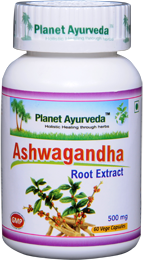
Overview
Falling down of blood pressure than the normal range is known as low blood pressure and hypotension is the medical term which is used for this. Optimal blood pressure of an individual is less than 120/80 but the blood pressure less than 90/60 is considered as low. In healthy people, a condition of low blood pressure is usually not a major concern, but it can be a sign of any health problem, especially in the elder people. In general, blood pressure reading appears as two numbers, the first one is higher always and the other one is lower.
The first and the higher number is a measure of systolic pressure. Systolic pressure is the pressure inside the arteries when our heart beats and fills them with the blood. The second number represents the diastolic pressure, which is the pressure in the arteries when our heart rests between the beats.
Types of Hypotension
1. Postural Hypotension:
This type of hypotension is also known as orthostatic hypotension. In this condition, sudden drops in the blood pressure occur. Postural hypotension occurs mostly in someone who is rising from a position of lying down or sitting position to the standing one. Sudden drop in the blood pressure occurs due to various reasons, some of them include:-
- Low or high body temperature
- Loss of blood due to bleeding problems
- Dehydration resulting from vomiting, fever, diarrhea & dysentery
- Severe allergic reaction (anaphylaxis)
- Severe blood infection such as Sepsis
2. Neutrally Mediated Hypotension
This is another type of hypotension that can occur when a person is standing for a long period of time. That may lead to symptoms like nausea, fainting and dizziness.
Causes of Low Blood Pressure
The exact cause of low blood pressure is not clear, but the following factors are associated with the low blood pressure:
- Pregnancy, hormonal changes such as underactive thyroid and low blood sugar etc
- Some medications
- Heart failure
- Dilation or widening of the blood vessels
- Liver disease, heat stroke or heat exhaustion
Low Blood Pressure in Ayurveda
In Ayurveda, low blood pressure is known as Nyuna Raktchap. According to Ayurveda, the condition of low blood pressure occurs due to vitiation in Vayu.
Is there any Ayurvedic Treatment for Low Blood Pressure?
Treatment of any disease, in general, depends on the cause of that disease. By maintaining a healthy lifestyle and healthy diet we can maintain the overall health of the body. In general, regular exercise helps us to stay fit, but a person suffering from low blood pressure should avoid vigorous exercise.
Ways to Manage the Symptoms of Low Blood Pressure
Depending on the cause of your blood pressure, you can manage the symptoms of low blood pressure to some extent by following ways:
- Dehydration can be managed by drinking more and more water. It increases the blood volume.
- Follow a healthy diet including fruits, vegetables, whole grains, lean chicken and fish. Beetroot juice is an excellent diet for low blood pressure. Fruits like bananas, mangoes, apples, grapes and leguminous vegetables are good for low blood pressure.
- Dizziness and lightheadedness can be reduced by going slowly when changing the body position. Breathe deeply for a few minutes, before getting out of bed in the morning.
- Instead of taking three large meals, take frequent small meals. Limit the intake of high carbohydrate foods such as rice, pasta, bread and potatoes.
Herbal Remedies for Low Blood Pressure (Hypotension) by Planet Ayurveda
Planet Ayurveda provides Ashwagandha capsules to maintain healthy blood pressure.
Ashwagandha Capsules
Planet Ayurveda Ashwagandha capsules are prepared using pure extract of herb Ashwagandha (Withania somnifera) in it.
Pack size – Each bottle contains 60 capsules in it.
Dosage – 1-2 capsules two times a day with plain water after meals.
Withania somnifera is a plant that belongs to the genus Withania. It is commonly known as Ashwagandha. The word Ashwagandha is a combination of two words Ashwa and Gandha. In Sanskrit, Ashwa means horse and Gandha means smell. So Ashwagandha means “the smell of horse” and hence the role that this herb play as it supports overall strength. This plant mainly contains steroidal lactones and alkaloids. The plant is about 35-75 cm long. Flowers of this plant are small and green in color. The fruit is of orange-red color.
Benefits of Using Planet Ayurveda’s Products
Planet Ayurveda provides 100 percent pure, natural and vegetarian products. All the products of Planet Ayurveda are free from chemicals, additives and preservatives and hence are free from side effects. All are safe to use.

